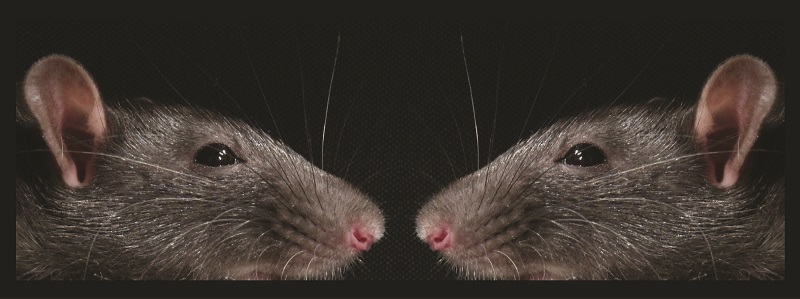Why Rats Sniff Each Other

Without being able to talk to each other, rats use sniffing as one way to answer key questions about strangers. Is that a female? Can I mate with her? Is this one sick? What did he eat? — All of this information can be learned through odor cues.
But new research shows that the act of sniffing itself might serve its own social function, allowing rats to reaffirm their hierarchical status and maintain order.
Daniel Wesson, a neuroscientist at Case Western Reserve University School of Medicine, studied how pairs of rats sniffed each other when they were placed in the same enclosure. In initial observations, Wesson saw that when one rat started sniffing another's body or behind, both rats ramped up their level of sniffing. But when one rat started sniffing the other's face, the other rat typically backed off and turned down its level of sniffing.
Further investigations showed that dominant rats (larger, more aggressive ones) didn't tamp down their sniffing, and sometimes increased it, when a subordinate rat sniffed them in the face. But when dominant rats started smelling their subordinates head on, and the subordinates failed to cut back on their sniffing, the top rats were quick to engage in aggressive behavior (kicking, biting or jumping on the other rat). The results suggest that sniffing can help high-ranking rats assert dominance and allow subordinate rats to appease their superiors and prevent aggression.
Wesson saw the same results when he inhibited the rats' sense of smell, which bolsters his claim that there's more to sniffing than odor-detection. And when he gave some of the rats oxytocin, a brain chemical that's been shown to enhance bonding and ease the pressure of hierarchies, these sniffing displays and aggression vanished. [That's Odd! The 10 Weirdest Animal Discoveries]
It's still not clear why only face-sniffing seems to serve a social function for rats, while body-sniffing and butt-sniffing don't. Wesson said one possibility could have to do with the fact that face-to-face interactions are very dangerous for a rat, as an injury to the throat or neck could be deadly.
"When animals come face-to-face with each other, they more or less have to be on their best behavior, otherwise they risk getting hurt," Wesson told LiveScience. "Another possibility is that there are cues given off during sniffing that can only be communicated when animals are in proximity with each other."
Sign up for the Live Science daily newsletter now
Get the world’s most fascinating discoveries delivered straight to your inbox.
Wesson said he hopes to explore the circuits in the brain that are activated when animals are engaged in this behavior, and to learn more about why animals decide to become aggressive, as well as which brain problems might cause animals to inappropriately deal with social cues.
The research was detailed in the journal Current Biology.
Follow LiveScience on Twitter @livescience, Facebook or Google+. Original article on LiveScience.com.










